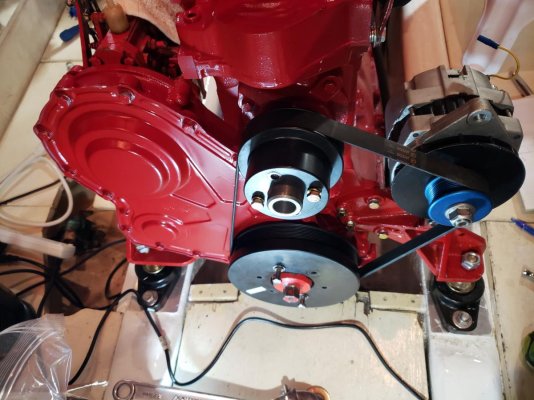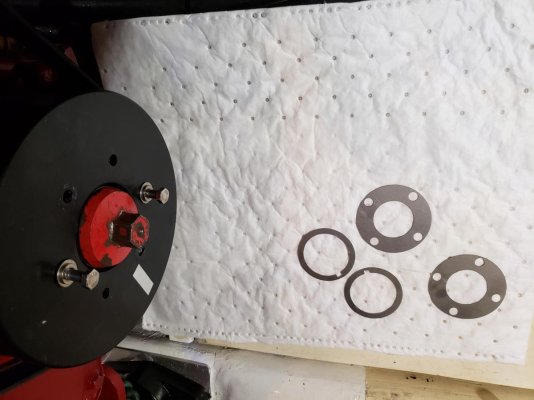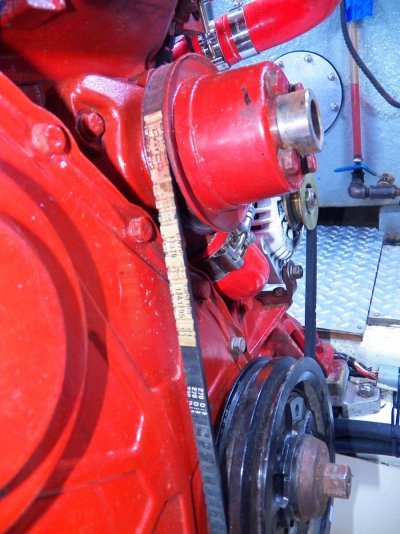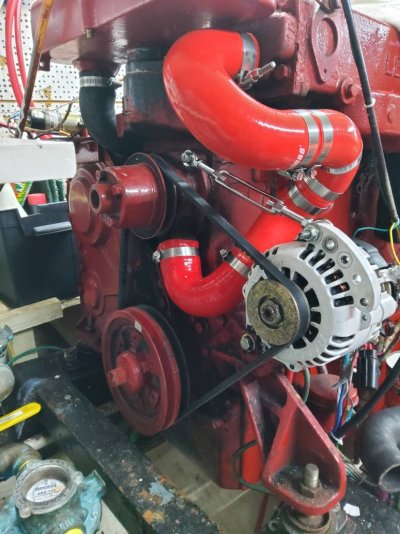slowbutsteady
Member
- Joined
- Nov 25, 2020
- Messages
- 17
- Vessel Name
- Makeleah
- Vessel Make
- 34' 1981 CHB Tri Cabin
Hi All,
I am in the process of upgrading from a leece neville 90 amp alternator to a balmar series 621 single pulley 100 amp alternator. I currently have a 3/8 inch v belt driving the alternator and water pump on my engine.
My understanding is I should upgrade this to a 1/2 inch belt to accommodate the extra friction from the higher output balmar.
Can I simply use the thicker belt on the same crank pulley and water pump bell housing pulley or do those need to be changed as well?
If so I may do a serpentine conversion kit as that's better all around, but it would be more boat bucks I don't want to spend right away.
Thanks in advance!
I am in the process of upgrading from a leece neville 90 amp alternator to a balmar series 621 single pulley 100 amp alternator. I currently have a 3/8 inch v belt driving the alternator and water pump on my engine.
My understanding is I should upgrade this to a 1/2 inch belt to accommodate the extra friction from the higher output balmar.
Can I simply use the thicker belt on the same crank pulley and water pump bell housing pulley or do those need to be changed as well?
If so I may do a serpentine conversion kit as that's better all around, but it would be more boat bucks I don't want to spend right away.
Thanks in advance!




